
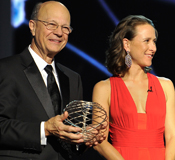 |
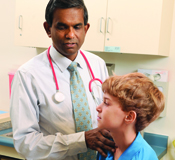 |
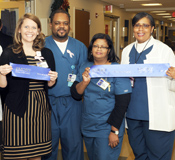 |
 |
EUH receives long-awaited Magnet® status
 |
| L to R: Dianne Foster (EUH director of nursing operations), Bob Bachman (EUH CEO), Susan Grant (Emory Healthcare chief nursing executive), and Maxine Foles (EUH nursing supervisor) |
Emory University Hospital (EUH) has received Magnet® recognition from the American Nurses Credentialing Center (ANCC), which ensures that rigorous standards for nursing excellence are met. Magnet recognition signals benefit to both patients and staff, including lower mortality and hospital-acquired infection rates, higher patient satisfaction, and higher job satisfaction among nurses.
With this milestone, EUH joins a group of fewer than 400 Magnet facilities around the globe. It is the third in Atlanta—the other two are Emory Saint Joseph's Hospital and Atlanta VA Medical Center.
"This achievement is the fruit of countless hours of work by thousands of people over the past six-plus years," says John Fox, EHC president and CEO, who describes Magnet status as the "unequivocal national and international gold standard for nursing quality."
To achieve Magnet recognition, organizations must pass a rigorous and lengthy process that demands widespread participation from leadership and staff. The process begins with submission of an electronic application, followed by written documentation demonstrating qualitative and quantitative evidence regarding patient care and outcomes. If scores from the written documentation fall within a range of excellence, an on-site visit by the ANCC will occur. The on-site review is followed by an appraisal report and vote to determine whether Magnet recognition will be granted.
“Our documentation, data review, and in-person interviews reflected years of work demonstrating improvements in patient outcomes and quality, nursing engagement, and patient satisfaction, among other things,” says Susan Grant, chief nursing executive at Emory Healthcare (EHC). "The ANCC’s on-site visit last month allowed us to show off our organization and how our many teams collaborate in providing care."
One person who would have been very proud, adds Grant, is Becky Provine, EUH chief nursing officer, who passed away last year. "Magnet was her passion, and she was a key driving force behind this achievement. She may not be here physically to see the outcome of our journey, but her spirit is with us as we celebrate."
Meanwhile, that journey continues for other EHC hospitals. Emory Saint Joseph's Hospital submitted its Magnet renewal documentation in October and is scheduled for a site visit next month for its fifth consecutive Magnet designation. EUH Midtown submitted its Magnet application in August and is now working on document submission to the ANCC.
DeLong receives science "Oscar"
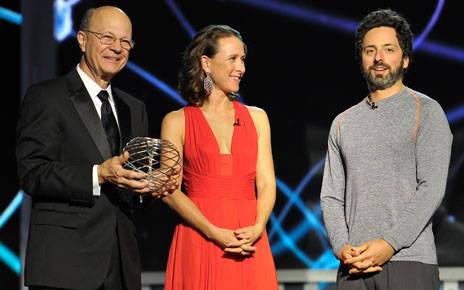 |
| DeLong is awarded by presenters Anne Wojcicki (co-founder of 23andme) and Sergey Brin (co-founder of Google). Photo by Steve Jennings/Getty Images. |
Celebrities on hand to congratulate the night's winners at the Dec. 12 event included Kevin Spacey, Glenn Close, and Conan O’Brien. The lavish setting was Mountain View, California, at NASA Ames Research Center's Hangar 1. And catering was by the French Laundry, consistently named among the top restaurants in the world.
Who were the persons being feted in this festive gala? Not movie stars, but scientists—physicists, geneticists, neurologists, cosmologists, and mathematicians, including Emory's own Timmie Professor of Neurology Mahlon DeLong.
DeLong received one of six $3 million 2014 Breakthrough Prizes in Life Sciences for his work in defining the interlocking circuits in the brain that malfunction in Parkinson's disease, laying the groundwork for circuit-based treatment of the disease by deep-brain stimulation.
The Breakthrough Life Science prizes, founded and supported by tech power couples and entrepreneurs Sergey Brin, Anne Wojcicki, Jack Ma, Cathy Zhang, Yuri and Julia Milner, Mark Zuckerberg, and Priscilla Chan, are given for excellence in research aimed at curing intractable diseases and extending human life. Their aim is to celebrate scientists and generate excitement about the pursuit of science as a career.
Brin and Wojcicki presented DeLong's award honoring his research on Parkinson's disease, which afflicts Brin's mother.
The $3 million that comes with the awards is a no-strings-attached recognition of achievement for the scientists. "They should make at least a fraction of what some Wall Street trader makes," said Russian entrepreneur and tech investor Yuri Milner.
For more than 20 years, DeLong has worked to understand the causes of Parkinson's. He heads one of the nation's largest and most distinguished groups of investigators studying the disease and related neurologic disorders.
The event will be broadcast by the Science Channel, one of the Discovery networks at 9 p.m. on Jan. 27. Read more.
—Mary Loftus
Trial offers personalized therapy for Crohn's
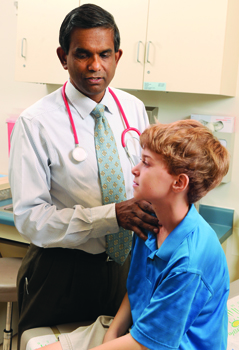 |
|
| Crohn's specialist Subra Kugathasan |
Subra Kugathasan (Marcus Professor of pediatric gastroenterology) is leading a new clinical trial for Crohn's disease that uses personalized cells from patients to target the autoimmune disease's inflammatory mechanisms. The study, for patients 18 to 65, is currently offered only in Atlanta.
The trial uses cells from the patient's own bone marrow, specifically mesenchymal stromal cells, which have the ability to generate a local immunosuppressive microenvironment. Unlike immunosuppressive drugs, like cortisone, which can affect the entire immune system, such cells leave appropriate immune responses intact. The fact that they are from the patient's own marrow also decreases the likelihood of rejection.
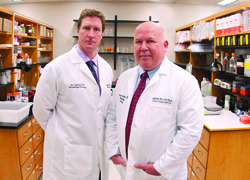 |
|
| Jacques Galipeau (right) with EPIC lab director Ian Coplan |
This trial is the first study launched in partnership with the Emory Personalized Immunotherapy Center (EPIC), located on the sixth floor of Emory University Hospital, where the cells are processed and mass-produced. According to Jacques Galipeau, EPIC director, cells from the EPIC lab are prepared in ways that improve their quality over those produced through more traditional methods. Most studies using cells expanded in the lab rely on bovine or other non-human growth factors and are frozen for storage and then thawed before use. The EPIC process relies entirely on human protein extract and only on fresh cells, which have been found to be more effective than frozen ones.
 |
|
| Tanvi D'here |
Tanvi D'here (digestive diseases) and K. Y. Chiang (pediatric hematology) are also involved in the Crohn's trial.
The trial is sponsored by the Crohn's and Colitis Foundation of America (which this month is honoring Kugathasan for his work) and by the Atlanta Clinical and Translational Science Institute. Read more about the trial and about EPIC.
Expansion completed for EUH Emergency Department
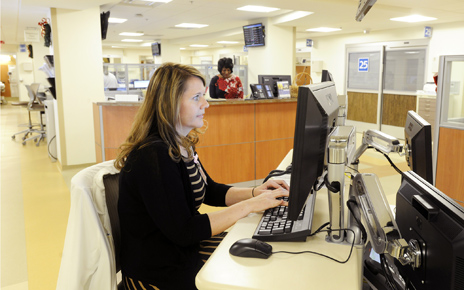 |
If you are looking for a lull in patient flow in a hospital emergency department (ED), your best bet, for reasons not entirely clear, is a Thursday morning. For that reason, those in charge at the EUH ED chose an early time slot on Thursday, December 12, to dedicate the ED's newly expanded digs.
After 18 months of renovation, the ED is nearly double its previous size, with 18,300 square feet to accommodate patients, families, and clinicians. The number of beds has increased from 21 to 34, with 31 in private rooms. A care transition area has been added to assess patients early on to streamline their care process. CT and X-ray imaging are now located in the ED to avoid transfer of patients and speed up diagnosis. All rooms are within view of several nursing stations, where teams of clinicians each can handle up to eight patients.
The ED also includes an eight-bed observation unit to help shorten length of stay for patients and improve the use of hospital resources and staff. All new spaces in the ED were conceived with input from clinicians as well as patients and families.
"The design and construction of the emergency department has been similar to a well-rehearsed orchestra, with a variety of people working together in harmony to create a masterpiece," said Kate Heilpern, Ada Lee and Pete Correll Professor and chair of emergency medicine. "The result will be more efficient flow for both patients and staff and shorter wait times for patients."
Before the new ED opened, the wait time to see a physician was around 60 minutes. That wait time now averages 30 to 40 minutes, says Matthew Keadey, chief of service for emergency medicine. "The wait times for admission or discharge are shorter as well, but we’d like to further shorten these times. Improving these metrics is a priority in 2014. We have re-engineered our care in this new space, but this is not the end of our journey."
At the ED dedication, Woody Spackman, director of pastoral services, remembered what it was like to be a patient in the ED when he suffered a heart attack 15 years ago. "These folks saved my life," Spackman said, on what happened to be his last day before retiring. "This ED is not just a beautiful technical space. It is a symbol of hope and healing." Read more.
—Pam Auchmutey
Our human impact
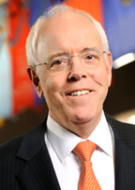 |
|
| Wright Caughman |
In some ways, 2013 was a brighter year for many Georgians, with a slow but steady economic recovery. However, we still have the fifth highest poverty ranking in the country, and nearly 20% of our neighbors lack health coverage. Meanwhile, we face a variety of potential external challenges whose effects on our economy and our institution remain to be seen. But through it all, two things remain unchanged: people in need continue to turn to the Woodruff Health Sciences Center for help, and serving them continues to be our highest priority.
The 2013 Community Benefits Report shows that the charity care Emory Healthcare provided in 2013 increased more than 11% from the previous year, to a record $80.3 million—a trend in recent years that we’re proud to continue. We also continued to care for Georgia’s neediest patients through our partnerships with Grady Hospital, Children’s Healthcare of Atlanta, and the Atlanta Veterans Affairs Medical Center. And our team provided an additional value of more than $86 million to our patients and our community through programs designed to improve access to care, advance medical knowledge, and reduce dependence on taxpayer-funded community programs.
Another impressive measure of community benefit is the Woodruff Health Sciences Center’s local economic impact, estimated at $6.8 billion for 2013, based on the center’s jobs, support of research, new construction, and other expenditures.
Such figures are important to understand, but our human impact and our impact on health and healing are immeasurable. Whether helping a family with housing and travel expenses so they can be near their critically ill son or helping a frightened cancer patient find a lifesaving clinical trial, we put service first in all that we do. Our groundbreaking clinicians and researchers—such as Parkinson’s pioneer Dr. Mahlon DeLong, who was recently honored with the Breakthrough Prize in Life Sciences—are transforming the way we prevent, detect, and treat disease not only for our own patients, but for people in need everywhere. And our relentless focus on quality for our patients has earned Emory University Hospital the highly prestigious Magnet designation.
These and other achievements show that, as impressive as our 2013 numbers are, it's the impact of our extraordinary people that truly makes a lifesaving difference for everyone we serve.
Thank you for all that you do to help WHSC save and improve lives, and best wishes for a happy and healthy 2014.Please direct questions and comments to evphafeedback@emory.edu.
 |
Emory launches new computing cluster at Georgia Tech
 |
Emory has contracted with Georgia Tech to launch a new high-performance computing cluster there for use by Emory researchers. The new cluster, named TARDIS, will replace the Ellipse cluster built in 2007, which will be phased out by May 2014.
As science fiction fans know, the name TARDIS alludes to a time machine and spacecraft from the TV series Doctor Who, whose notable characteristic is that its interior is larger than its exterior. Emory's TARDIS likewise looks small, taking up much less space than its predecessor—less than a single cabinet rather than 20.
Although more compact than Ellipse, TARDIS has more memory and flexibility, while consuming less power. It also provides more storage, a total of 40 terabytes, all fully backed up. The cluster can be accessed from any lab on the Emory network or remotely by Emory VPN and is dedicated to Emory researchers. Read more.
NIH renews and expands HIV/AIDS clinical trials designation
 |
The NIH has selected the Emory-CDC HIV/AIDS clinical trials unit (CTU) as one of 37 CTUs responsible for implementing its clinical research network. The seven-year designation provides expected core funding of more than $12.5 million. Emory's HIV/AIDS CTU first received NIH designation in 2007, but the new designation and inclusion of CDC and two international sites will substantially boost its clinical trials work. The CTU will conduct clinical trials within three NIH-sponsored networks: the AIDS Clinical Trials Group, HIV Vaccine Trials Network, and HIV Prevention Trials Network. The three CTU principal investigators are Jeffrey Lennox, Carlos del Rio (Hubert Professor), and Mark J. Mulligan. Read more.
Emory joins new NIH stroke network
In collaboration with Grady Hospital's Marcus Stroke & Neuroscience Center, Emory is now part of an NIH network of 25 regional coordinating centers created to streamline stroke research by speeding up clinical trials and decreasing their cost, centralizing approval and review, and assembling a comprehensive data-sharing system. "Georgia StrokeNet is the only funded site in the state," says stroke specialist Michael Frankel. Read more.
Notable
John Fox (Emory Healthcare CEO) was named chair-elect of the Georgia Hospital Association. Read more.
 |
George Grant has been appointed executive director of the Emory Center for Pastoral Services. He replaces Woody Spackman, who retired from Emory last month after a 28-year career here.
Marilyn Margolis received the 2013 Lifetime Achievement Award from the Georgia Hospital Association. Read more.
 |
Helen Mayberg (Fuqua Chair in Psychiatric Imaging and Therapeutics) was one of 388 people in 2013 to be elected a AAAS fellow for her contributions to understanding neurobiology of depression and new treatment approaches. Read more.
The Emory-Georgia Tech Healthcare Innovation Program, led by Fred Sanfilippo, received one of 13 Learning Health System Challenge and Planning awards from the Association of American Medical Colleges.
Sheri Tejedor has been named chief research information officer for the medical school and medical director for analytics for Emory Healthcare.
Save the date
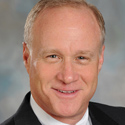 |
Feb 6: Healthcare Innovation Symposium IX: Teaching Hospitals and Health Services Research, featuring Steven Lipstein, president and CEO, BJC Healthcare; vice-chair, Patient-Centered Outcomes Research Institute; and WHSC trustee. 4:30-6:30 p.m. EUH auditorium. Reception to follow. More info.
Feb 28: Georgia Immunoengineering Consortium 1st Annual Consortium. Starvine Ballroom, Emory Conference Center. More info.
